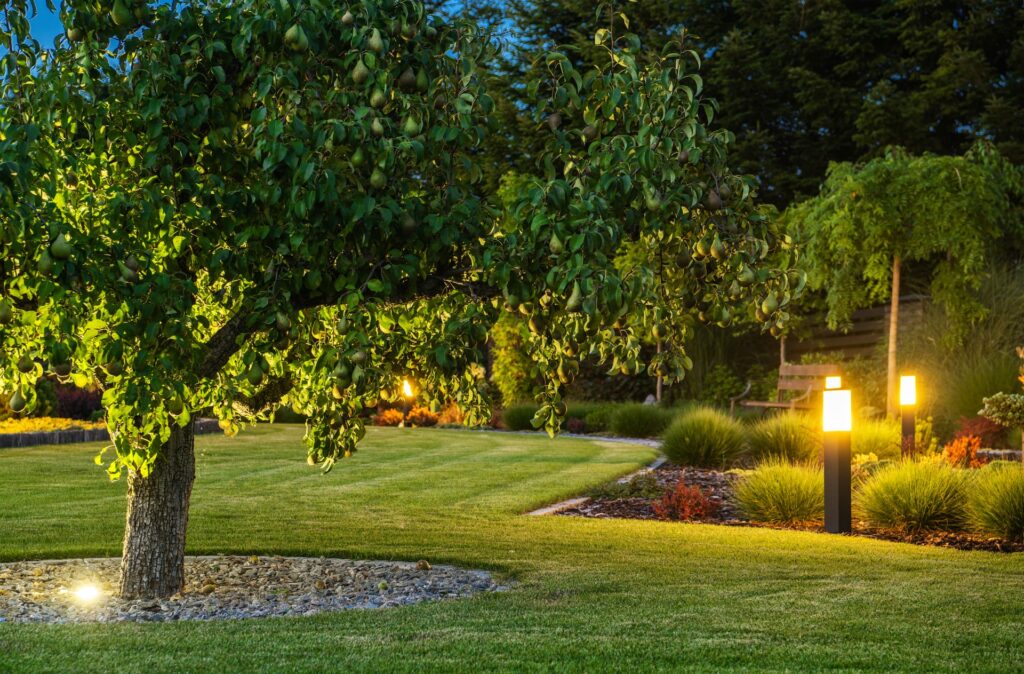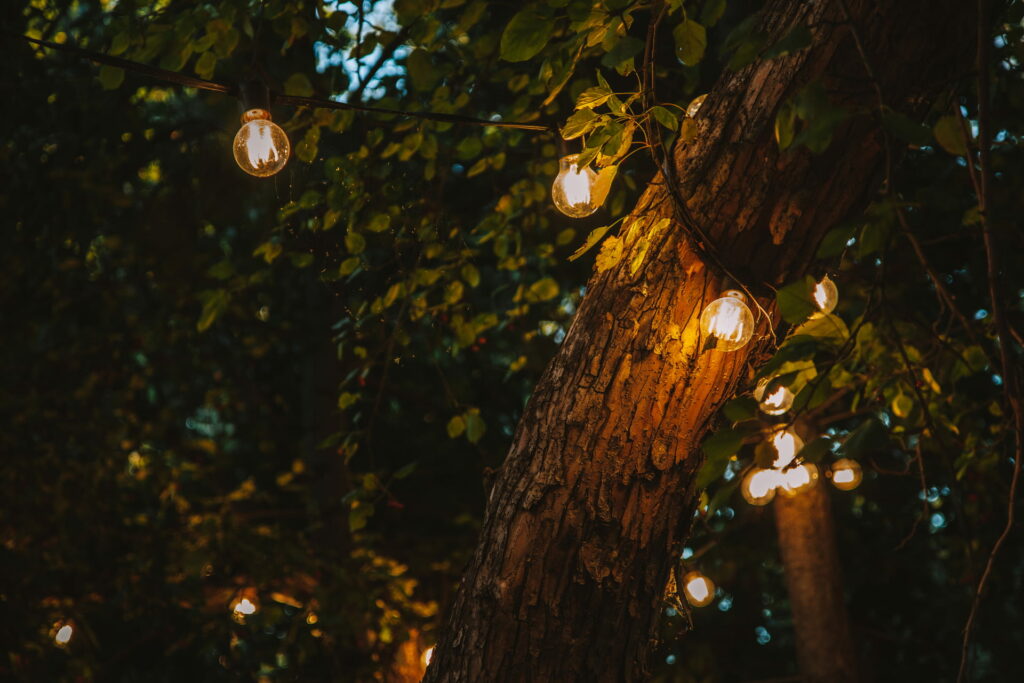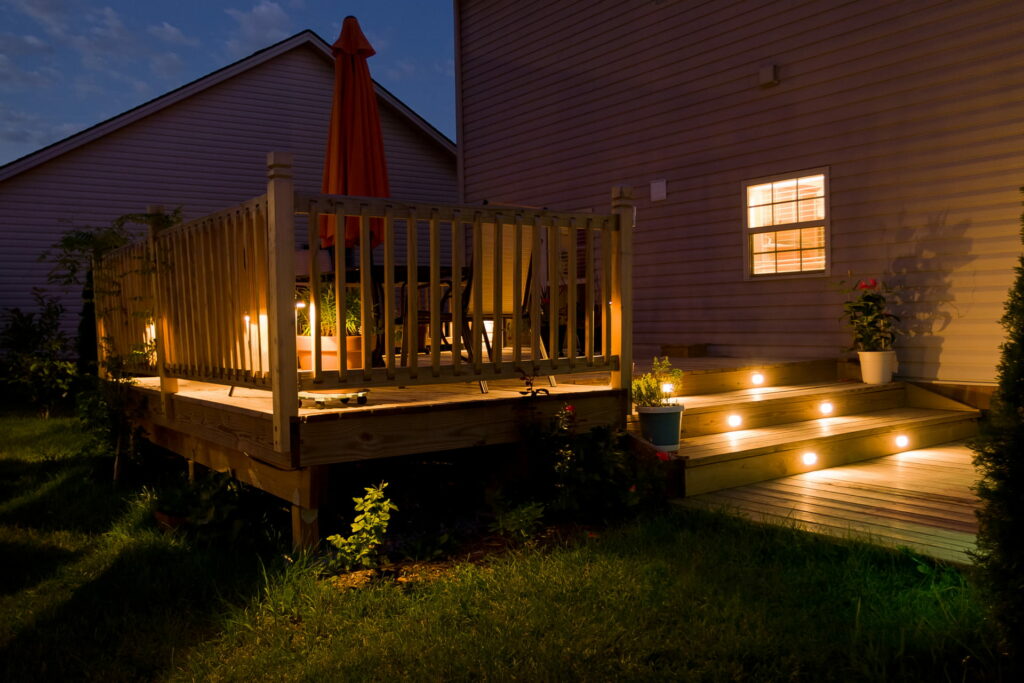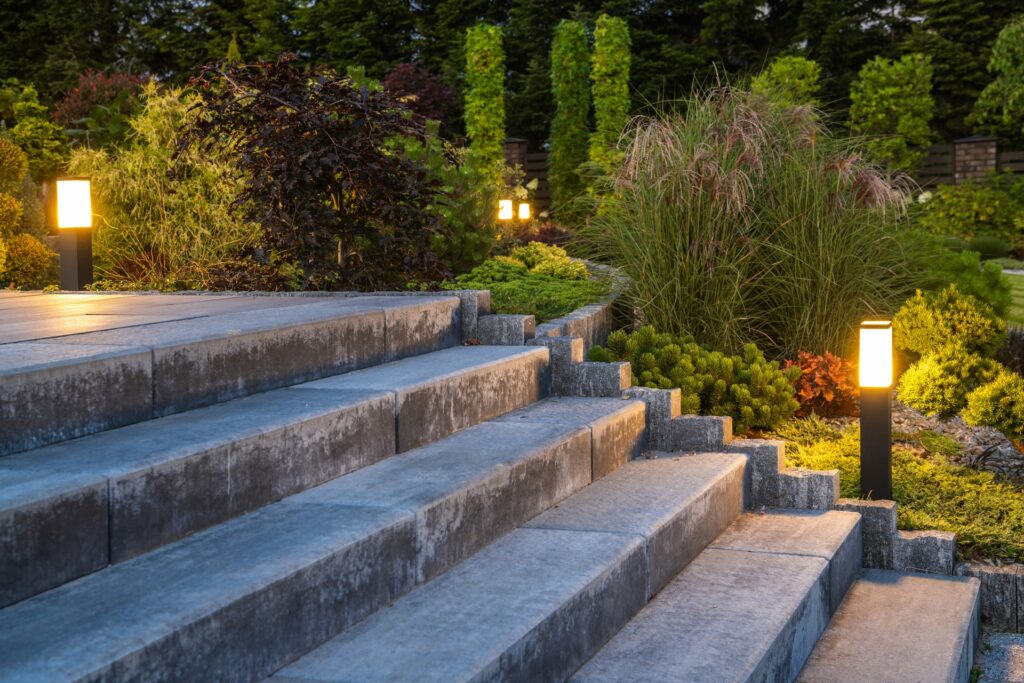Unlock the Potential of Your Outdoor Space with Strategic Lighting
There’s something magical about a garden at night. The play of light and shadow can transform an ordinary landscape into an enchanting space, creating an entirely different ambiance from the daytime garden. But to achieve this effect, it’s not enough to merely install a few lights at random. Landscape lighting is an art, and like any art, it requires thought, creativity, and a keen understanding of the medium. In this article, we’ll explore the various aspects of landscape lighting and how you can use it to enhance your Augusta, GA garden’s nighttime appeal.

The Role of Landscape Lighting
Landscape lighting serves multiple purposes. Primarily, it illuminates your outdoor space, making it usable and safe after the sun goes down. But it’s more than just a practical feature. Done correctly, landscape lighting can accentuate the architectural features of your home, highlight the focal points in your garden, and create a pleasing ambiance that invites you to spend more time outdoors.
Safety and Security
Well-lit exteriors are less likely to be targeted by burglars. Lighting can also prevent accidents by illuminating pathways, stairs, and other potential hazards.
Usability
Good lighting extends the usability of your outdoor spaces after dark, allowing for evening entertaining or just a quiet night enjoying the beauty of your garden.
Aesthetics
Landscape lighting can enhance the beauty of your garden, highlighting its best features and creating dramatic effects with shadows and silhouettes.

Types of Landscape Lighting
There are several types of landscape lights, each serving a different purpose. Understanding these can help you create a balanced lighting plan for your garden.
Path Lights
These are low to the ground and illuminate walkways, driveways, and garden paths. Path lights not only make these areas safer to navigate but can also outline the shape of your garden at night.
Spotlights
Spotlights are used to highlight specific features in your landscape, such as trees, architectural details, or garden statues.
Up Lights
These are placed at ground level and shine light upwards, creating dramatic lighting effects. They’re perfect for showcasing tall trees or the texture of a garden wall.
Down Lights
Also known as moonlighting, these fixtures are mounted high up (in trees or on the house) and cast light downward, mimicking the effect of natural moonlight.
Deck and Step Lights
These small fixtures are installed directly into your deck or stairs to provide low-level lighting for safety and ambiance.
Designing Your Landscape Lighting Plan
Designing an effective landscape lighting plan involves more than just deciding where to put the lights. You need to consider factors such as what elements to highlight, what type of lighting to use, and how to balance light and shadow for the best effect. Here are some points to consider.
Identify Your Garden’s Best Features
What do you love most about your garden? Maybe it’s a majestic tree, a beautiful sculpture, or a stunning water feature. Your landscape lighting should enhance these features, making them stand out even at night. For instance, you might use spotlights to highlight a statue or uplights to showcase the texture of a tree’s bark.
Think About the Big Picture
Good landscape lighting is about creating a cohesive look. Think about how different parts of your garden relate to each other and how you can use lighting to create harmony and flow. This might mean using similar lighting styles throughout the garden or arranging lights in a way that guides the eye from one feature to another.

Create Depth and Contrast
One of the key principles of good lighting design is to create a sense of depth. This can be achieved by layering light, with some areas more brightly lit than others. Similarly, using contrast—light and dark—can add drama and visual interest to your garden.
Consider the Color of Light
Not all lights are the same color. Some emit a warm, yellowish light, while others produce a cool, bluish light. The color of light can significantly affect the mood of your garden. Warm light tends to create a cozy, inviting atmosphere, while cool light can evoke a serene, moonlit scene.
Maintaining Your Landscape Lights
Maintaining your landscape lights is essential for keeping your garden looking its best. This includes cleaning the fixtures, replacing burnt-out bulbs, and adjusting the fixtures as needed to ensure they’re illuminating the right areas.
Regular Cleaning
Dirt and debris can dull the brightness of your lights. Regular cleaning will keep your fixtures looking good and functioning properly.

Replacing Bulbs
Even the highest quality bulbs eventually burn out. Regularly check your lights and replace any burnt-out bulbs promptly.
Adjusting Fixtures
Over time, fixtures may get knocked out of alignment by wind, animals, or other factors. Make sure to check your fixtures regularly and adjust them as needed.
Conclusion
Landscape lighting can dramatically transform your garden, turning it into a magical nighttime space. By understanding the different types of lights and considering factors such as safety, usability, and aesthetics, you can create a lighting plan that enhances your garden’s best features and creates a beautiful, inviting outdoor space for you to enjoy long after the sun has set.
Whether you’re embarking on a full landscape redesign or just looking to add a little extra sparkle to your garden, remember: landscape lighting is an art. With a little creativity and planning, you can use it to create a stunning masterpiece that is your Augusta, GA garden.